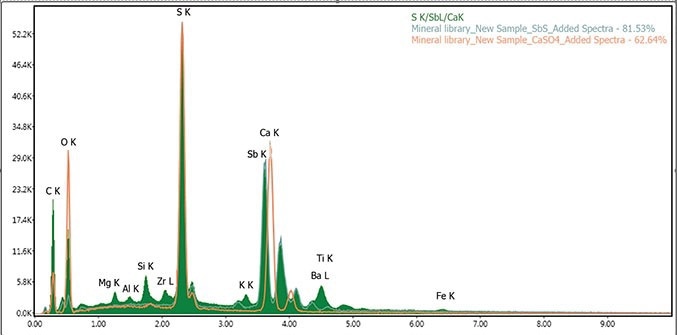The EDAX Spectrum Match is a powerful software tool that streamlines the identification of unknown spectra by automatically comparing them against a custom-built spectrum library. This simplifies the process by quickly matching spectra to similar references, making it easier to distinguish discrepancies and similarities among potential candidates.
Matching an unknown spectrum to potential library candidates is based on the Chi-squared goodness-of-fit statistical method, comparing either concentration data or spectral lines directly. The match sensitivity is fully adjustable, allowing users to control match results with their desired level of confidence.
Potential matching spectra are overlaid on the original spectrum, with a match percentage indicating the degree of similarity. This visual representation makes it easy to assess differences and similarities at a glance.
The EDAX Smart Materials and Minerals Library option includes 150 common metal standard alloys and minerals featuring:
- Stainless steels
- Tool steels
- Alloy steels, including Ni-based and Cu-based alloys
- Carbon steels
Additionally, the library features over 50 silicates and other geological standard materials, aiding in the identification of environmental and mineralogical components.
When using the library, the top three matches for an unknown sample are displayed, along with numerical values representing the goodness-of-fit percentage. A spectral overlay further confirms the alignment of spectral peaks for accurate identification.

Figure 1. Spectrum extracted from the map visibly and numerically identifies this phase as SbS with a much higher fit % than CaSO4 even though they contain common elements despite the challenging Sb and Ca peaks. Image Credit: Gatan, Inc.
Spectrum Match provides the fastest and most reliable method for conclusive material characterization, even in cases where peak overlaps cause interference. Unlike traditional approaches, its quantification results are less affected by variations in acceleration voltage, geometry, and detector characteristics, ensuring consistent and accurate identification.